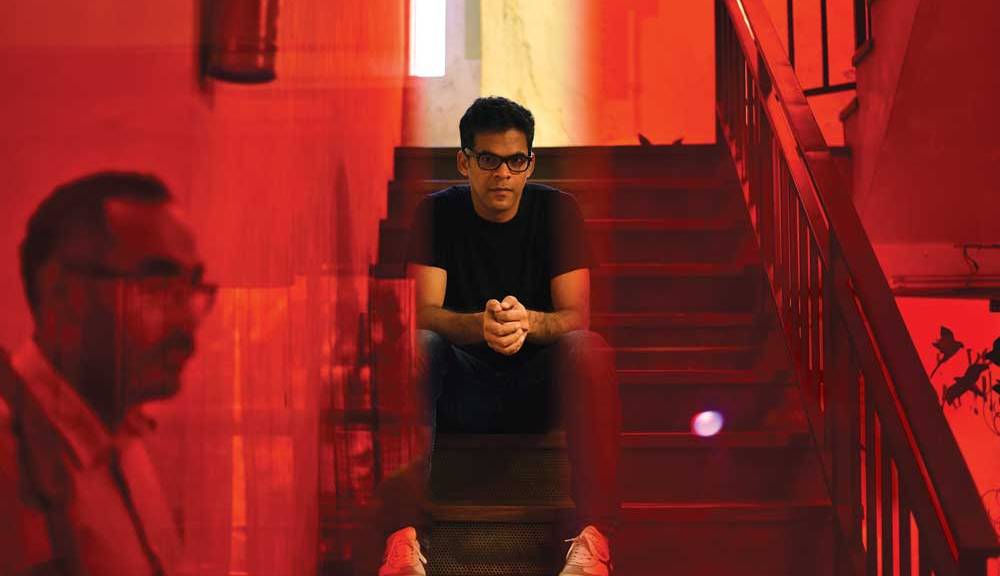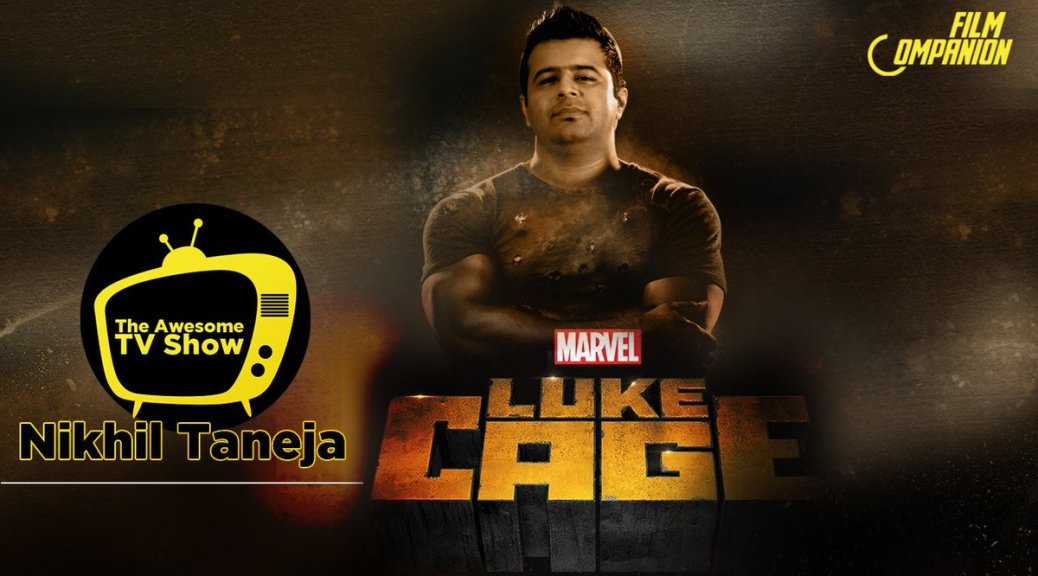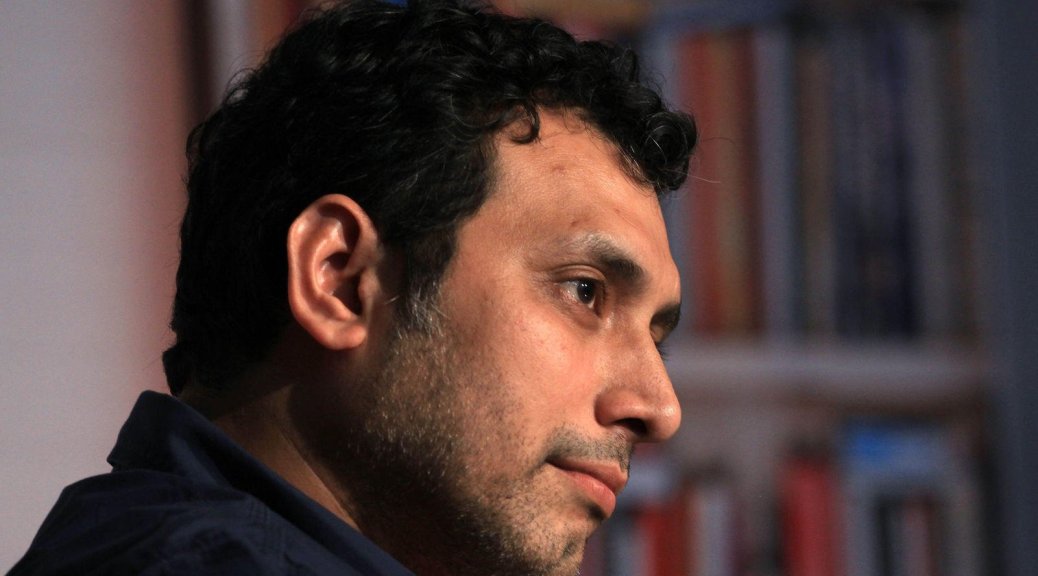Neeraj Pandey: Captain Cool
A big budget feature film on India’s most successful captain is a different kind of thriller for Neeraj Pandey.
Note: This piece was written by Nikhil Taneja (@tanejamainhoon) for Open Magazine. An edited version of the piece can be found here: https://goo.gl/55CBEJ
In two weeks, National Award-winning filmmaker Neeraj Pandey will face the biggest test in his (roughly) decade-long Hindi film career. On September 30, his fourth feature film as writer-director, MS Dhoni: The Untold Story, made over a period of two-and-a-half-years, on a reported budget of Rs 80 crore, will release worldwide in four languages.
A biopic on the life of arguably India’s greatest cricket captain, Mahendra Singh Dhoni, Sushant Singh Rajput-starrer MS Dhoni will be Pandey’s first film since A Wednesday! to feature a lead actor other than Akshay Kumar (he starred in both Special 26 and Baby), in a genre other than a thriller, on a story not his own, and on a canvas far bigger than anything he’s ever played with.
But over an hour-long afternoon conversation in the meeting room of the office of his production outfit, Friday Filmworks, which he co-owns with producing partner Shital Bhatia, you could very well pass off Pandey as ‘Captain Cool’, the moniker deservingly earned by Dhoni for his ability to stay unfazed, especially at crucial junctures of any match.
If the film is a critical moment in his own journey, Pandey doesn’t betray any sign of nerves. He is visibly unpretentious, laidback and genial during the interview, and for a man fresh off a Rs 100 crore plus box office hit that he produced in August with Rustom, he is self-deprecating to the extent that he answers every other question first with a joke on himself, before grappling to find an earnest response, but only to satisfy the demands of the query itself.
Because, just like Dhoni again, Pandey seems conscientiously focused on the prize, and everything else in between is something he’d rather get through with, so he can do what he loves doing, his ‘9 to 5’, as he calls it. And for this reason, giving interviews, going to Bollywood parties or even being ‘visible’ for anything other than actual work is a task. “I love what I do, there’s no denying that,” he says, “but this is not my entire life.”
“My passion is pre-configured and I have a lot of respect for my ‘9 to 5’ or ‘9 to 12’ sometimes, so I don’t feel the need to display it. I have never felt I am a crusader in the world of movies, ki yahan jhande gaadenge (I’ll bury my flags here). Between writing something and creating something, I’m dealing with the world in my own way, and that negotiates all these other issues, and purges me in so many ways. That’s my day to day motivation, and I hope it continues; I hope I remain this way.”
Pandey’s way, of course, is a stark contrast to most filmmakers in an industry that’s certainly a large part film, but also equal parts glamour. And that could perhaps be because of the non-filmy journey the director’s had to reach where he is today. Growing up in late ‘70s Calcutta, as it was called then, to working class parents, Pandey wasn’t the kind of child who had his life chalked out in any way.
“You know, it’s a myth that everyone in Calcutta is intelligent,” he says with a laugh, pointing out that he shouldn’t be perceived as intelligent ‘just because he was born there’. “No doubt, some of the people who shaped the film industry in the ‘50s and ‘60s were Bengalis, but you are talking about Howrah, jahan Bombay pata hi nahin tha kahan hai, hamein (where we didn’t even know where Bombay was). Most of my friends wanted to do BCom and the more dynamic ones had only one dream, bas yahan se nikal jaayein’ (to just get out of here). At that time, I really had no clue what I wanted to do with my life.”
If there was one thing that he did know, it was that he liked telling stories through his childhood. “I was very good at lying as a kid and it all started from there,” he says with a straight face. “I was a very mischievous kid, so I had to keep on making excuses, by using my imagination and digging up stories. I think that, sort of, perfected my skill at storytelling and sowed the seed.”
Pandey was always a literature buff and was just as interested in all forms of sports, growing up. Looking back, he is certain that the nudge towards movies was more subconscious than either of these active hobbies. “I can make it sound profound and intelligent at this point, but to be honest, at that time, I just liked watching films a lot, without knowing anything about the film industry or that I’ll be pursuing a career in it.”
Two films in particular left an indelible mark on him, though. One was Kamal Amrohi’s Pakeezah, the “experience” of which stayed with him through the years. The other was Guru Dutt’s Kaagaz Ke Phool that he watched a number of times to “find out why I am seeing it over and over again”. “Maybe it was the theme of rise-and-fall that affected me, or maybe it was the music, which I was very, very fond of at that time, contrary to what I’m known for today,” he says sheepishly.
“One song in the film, Kaifi Azmi’s ‘Dekhi zamaane ki yaari’ stayed with me and that disturbed my parents a lot ki kuch to problem hai idhar (there’s some problem here). Because at that age, you are not listening to this kind of music.”
Talking about his parents, Pandey says he feels “blessed” that they were always encouraging towards any hobby or passion that cultivated, as opposed to other parents of that generation, who’d rather their children pursue either of engineering or medical sciences. He remembers how they never stopped him from doing anything, until it was absolutely necessary. So when he took up reading and films as hobbies, there was no “resistance”. “In fact, I guess it was more a sense of relief than anything else for them that I found something to do with my life,” he reminisces with a laugh.
Films turned into a passion for Pandey during his college years in Delhi in the early ‘90s, as a literature student in Delhi University’s Sri Aurobindo College. He briefly flirted with theatre, strictly as a writer-director, he points out (“there was no confusion about this bit!”), and eventually decided to take up film because he “had no other skillset”, or so he insists.
“If you are a Lit graduate, you anyway don’t have too many choices left in life,” he grins. “Stories excited me, and so I decided to learn direction to be able to tell them visually. My source of inspiration, and my institution at that time was TNT. The channel, which was Cartoon Network by day, used to show black-and-white movies from 9 pm to 6 am. That became a huge source of learning for me. The best stories were made in the ‘40s and ‘50s, even in Hollywood, so watching them sorted me out in life.”
The aspiring director at the time tried getting admission in the renowned Film and Television Institute of India, Pune, but was rejected. So he started doing television in Delhi, as a stepping stone to film. He first started as an assistant director and then worked on a couple of telefilms and fiction television as an independent director for Doordarshan and others, because he says he knew that he won’t get to be a film director “so fast”. “Main kisi ko jaanta thodi na tha (It’s not that Iknew anyone) that I’ll come here suddenly get a film.”
Indeed, after shifting to Mumbai in 2000, it took time for Pandey to get the chance to work on his first feature film, 2008’s critically-acclaimed A Wednesday! that won him a National Award for Best First Film by a Director. Till then, he worked on commissioned documentaries, TVCs and more television, a lot of it through the first production set up he formed with Bhatia, Quarter Inch Productions.
Meanwhile, he wrote three films, a romantic comedy, a comedy and a satire, none of which saw the light of the day. The 2006 Mumbai serial train blasts inspired him to script A Wednesday! that went on to become a sleeper hit, subsequently being remade in Tamil as Unnaipol Oruvan and Telegu as Eeenadu, both starring Kamal Hassan in the role of Naseeruddin Shah as the ‘common man’ whose life is derailed because of a terror attack.
It was this movie that labelled him as a “thriller guy who makes films about the common man”, a tag that he has now stopped fighting or reacting to. “I have realized you can’t control what the audience or critics take away from a film,” he states.
“I had gone to the theater to see the audience reaction during A Wednesday!, and found myself sitting ahead of two people, who were basically discussing if Naseeruddin Shah’s character was a Hindu or a Muslim and that’s when I realized it’s all gone to the dogs (laughs). The whole point of the movie was to not talk about that, and here I was. Of course, the good thing was that at least people were talking… and perhaps there is a third guy who would counter these two and tell them what the point really was. That’s who I made the film for.”
Ever since, he has stopped falling into this “trap” of trying to leave his audience with any sort of a moral takeaway through his writing. “It’s very important to me that I am not indulgent in thinking ki audience iske baare mein kya sochegi (what will the audience think about this),” he explains.
“But you do want them to be left with some residual value in broad strokes, so what you are trying to say is translated to them, else what’s the point? Like, in Baby, you were looking to give people a sense of respect for the guy on the border. But usually, the audience gratification I want is only in terms of their attention. As a storyteller, my entire focus is to tell any story as entertainingly as possible and then I hand it over to the director in me, who is a crowd pleaser, and knows when to amp up the background score!”
If there’s one conscious rule that Pandey follows is in his writing is to never hurt or offend anyone, because he asserts that he holds all religions and people in equal regards. Beyond that, he only wishes to deliver quality storytelling, which he hopes people have come to expect from his films, but not so that he becomes “a brand name or something of that sort.”
“It is imperative for me that audience likes the film so people who put their money in the film recover their money so I can make one more film and explore one more genre and tell one more story, and the faith sustains… it’s as simple as that. We are not making films only for ourselves, else we may as well make home videos. We are catering to an audience, so you have to respect that.”
His successful collaboration with Akshay Kumar, twice as a director and once as a producer (Rustom), which has arguably resurrected the actor’s career and given him a new identity as this generation’s Manoj ‘Bharat’ Kumar, is also more a nod to the audience than to do with his comfort level with the star, or a conscious choice as a filmmaker. “If your gamble pays off, you are hooked on to it right? It’s no rocket science,” he smiles.
But of course, he continues, in Kumar, he has found a star who comes to set as an “actor”, which, he explains, makes his work as a director easy. “There are no airs about him. He and no last minute brilliant epiphanies on set ki koi bulb jal gaya (that some bulb has lit), and he is extremely disciplined. That gives me the ability to focus only on the job at hand.”
On MS Dhoni: the Untold Story, the job at hand may have looked daunting to some, in trying to do justice to the legend of one of contemporary cricket’s biggest idols, but for Pandey, the movie was never about the cricket itself, but about the man and his journey, and that’s what made him take up the challenge of presenting it on the big screen.
After he was offered the film, he found himself in a room talking to Dhoni, and reckons that experience to be a “déjà vu”, because “it didn’t feel like you are meeting him for the first time. He is extremely grounded and earthy and holds all his players and teammates in such high regard that I knew, in that very meeting, that this was a story I had to tell.”
“It’s a very inspiring story about the making of the man that is MS,” he continues. “It’s a story of tenacity, something that, in my belief, pays off big time. If you can be very clear about the fact that this is my goal and go after it, and look the odds in the eye, chances are that you will have a good journey, and you will reach a good place.”
MS Dhoni’s story, of a man who started from nowhere and went on to carve a kind of arc for himself that one can only dream of, is, in a way, the story of India’s ultimate common man. And as such, it only makes sense that Pandey was handpicked to direct it.
As the maker of films that glorifies the extraordinary deeds of the ordinary man, and for a man resolutely trying to stay common in an industry that thrives on the uncommon, it is possibly that the tenacity of Neeraj Pandey’s journey brought him here, and just like Dhoni, it is perhaps the thrill of the chase that will take him towards a good place too.
Follow the blog on your left and like The Tanejamainhoon Page on FB: /tanejamainhoonpage
Follow Nikhil Taneja on FB: /tanejamainhoon, on Twitter:
@tanejamainhoon, on Instagram:@tanejamainhoon,
on Youtube: /tanejamainhoon
Liked/disliked the piece? Leave your comments below!
Note: This interview first appeared in Open Magazine on September 16, 2016
Link: http://www.openthemagazine.com/article/cinema/playing-with-dhoni
Picture courtesy: Google. None of the pictures are owned by the author all rights belong to the original owner(s) and photographer(s).
© Copyright belongs to the author, Nikhil Taneja. The article may not be reproduced without permission. A link to the URL, instead, would be appreciated.










